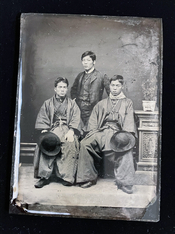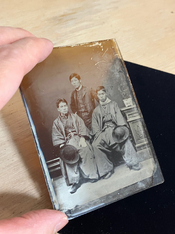I recently got this 19th-century ambrotype at an antique market in Japan. Since I do wet plate photography myself, I’m curious about the type of paint or varnish that was historically used back then.
Since this is an ambrotype, the collodion side needs to be backed with a black cloth or some kind of black paint (or varnish) to make the image appear positive. As you can see in the picture, it’s not black paint but more of a dark amber color. It’s also somewhat transparent.
I don’t think the paint used was unique to Japan, as the technique was originally brought from abroad. I’m wondering if I could apply this type of paint to my own ambrotypes.
If anyone has expertise in historical wet plate photography, I would love to learn more!
Thanks in advance!
Since this is an ambrotype, the collodion side needs to be backed with a black cloth or some kind of black paint (or varnish) to make the image appear positive. As you can see in the picture, it’s not black paint but more of a dark amber color. It’s also somewhat transparent.
I don’t think the paint used was unique to Japan, as the technique was originally brought from abroad. I’m wondering if I could apply this type of paint to my own ambrotypes.
If anyone has expertise in historical wet plate photography, I would love to learn more!
Thanks in advance!








